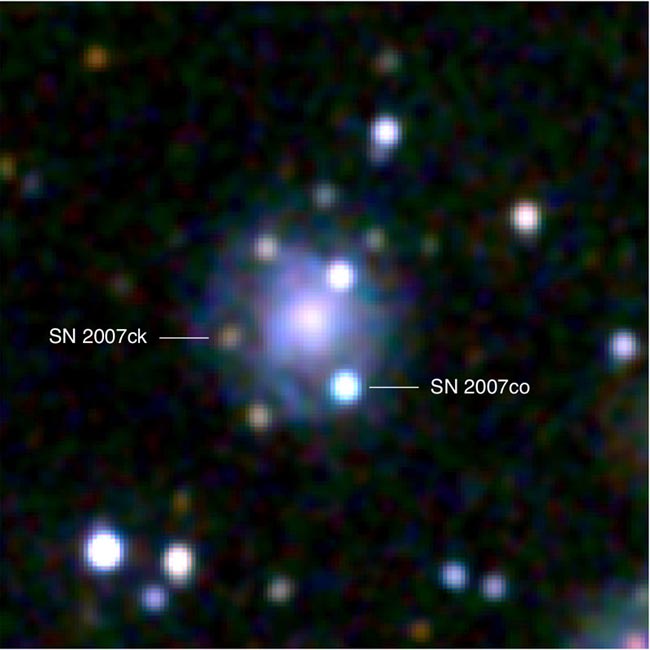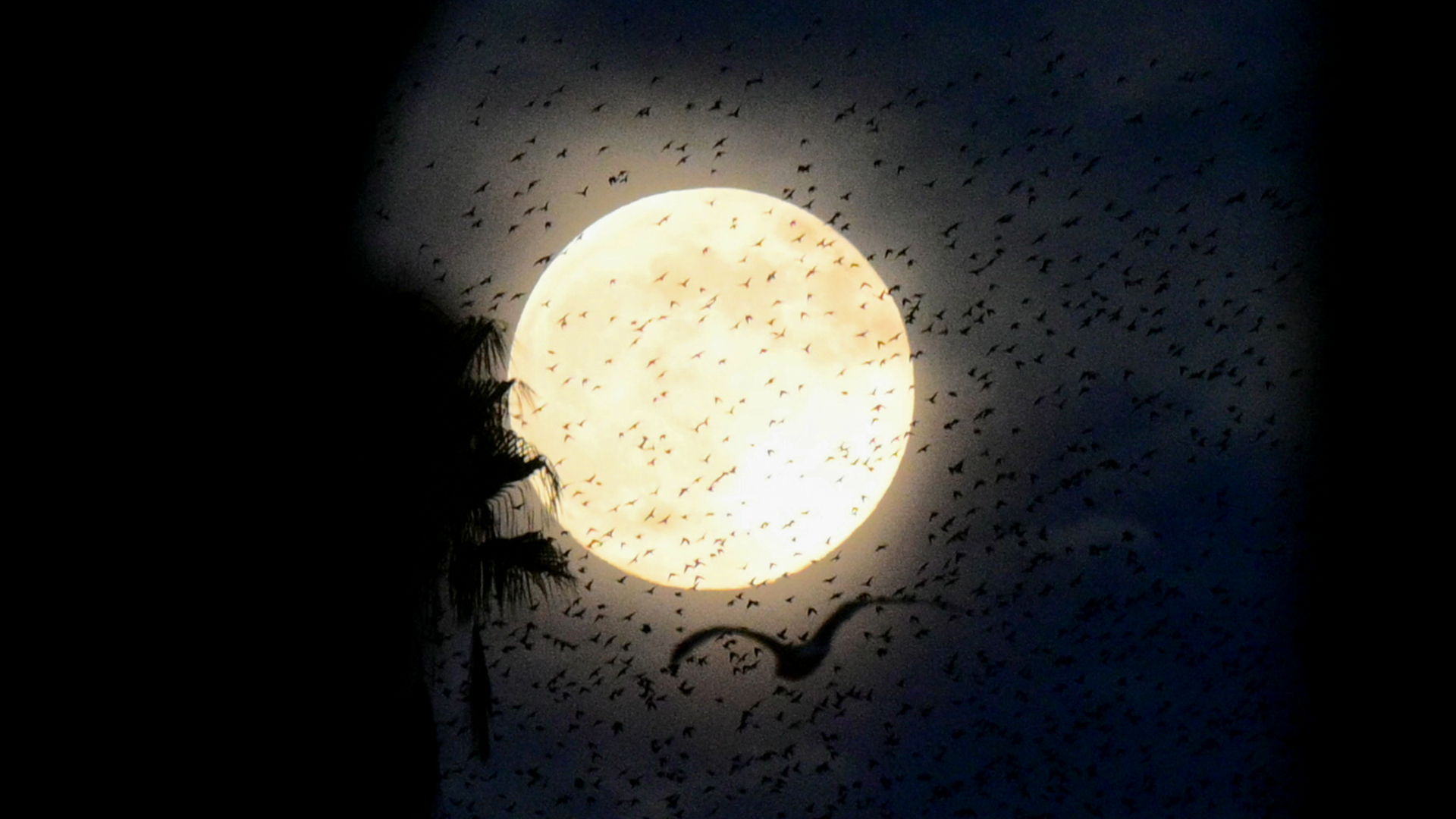Astronomers Spot Double Star Explosion

Scientists have spotted two stellar explosions going off just weeks apart in the same galaxy.
The discovery, made by NASA’s Swift satellite, marks the first time two supernova events have been observed in a single galaxy so close in time.
The blasts occurred in an obscure galaxy located 380 million light-years away in the constellation Hercules. Called MCG +05-43-16, the galaxy had never been known to host a supernova before.
Supernovas are extremely energetic explosions that mark the deaths of massive stars. The two newly spotted blasts were triggered in different ways. Supernova 2007ck, first spotted on May 19, was a so-called Type II event, which occurs when the core of a massive star runs out of nuclear fuel and collapses under its own gravitational weight. This produces a shock wave that tears the star apart.
In contrast, Supernova 2007co was a Type 1a event, which occurs when a white dwarf star siphons off so much material from the surface of a companion star that it blows up like a giant thermonuclear bomb. This second blast was observed on June 4.
“Most galaxies have a supernova every 25 to 100 years, so it’s remarkable to have a galaxy with two supernovas discovered just 16 days apart,” said Stefan Immler of NASA’s Goddard Space Center. In 2006, Immler used NASA’s Swift satellite to image two supernovas in the elliptical galaxy NGC 1316. Both of those explosions were Type 1a events, and occurred about six months apart.
Scientists say the near simultaneous explosions in MCG +05-43-16 is just a coincidence created by our unique vantage point. Within the faraway galaxy, the two supernovas are tens of thousands of light-years apart, and because light travels at a finite speed, alien astronomers in the galaxy itself, or in a different galaxy, might record the two explosions as happening thousands of years apart.
- Top 10 Star Mysteries
- Vote Now: The Strangest Things in Space
- Video: Supernova: Destroyer and Builder
Breaking space news, the latest updates on rocket launches, skywatching events and more!

Space.com is the premier source of space exploration, innovation and astronomy news, chronicling (and celebrating) humanity's ongoing expansion across the final frontier. Originally founded in 1999, Space.com is, and always has been, the passion of writers and editors who are space fans and also trained journalists. Our current news team consists of Editor-in-Chief Tariq Malik; Editor Hanneke Weitering, Senior Space Writer Mike Wall; Senior Writer Meghan Bartels; Senior Writer Chelsea Gohd, Senior Writer Tereza Pultarova and Staff Writer Alexander Cox, focusing on e-commerce. Senior Producer Steve Spaleta oversees our space videos, with Diana Whitcroft as our Social Media Editor.
